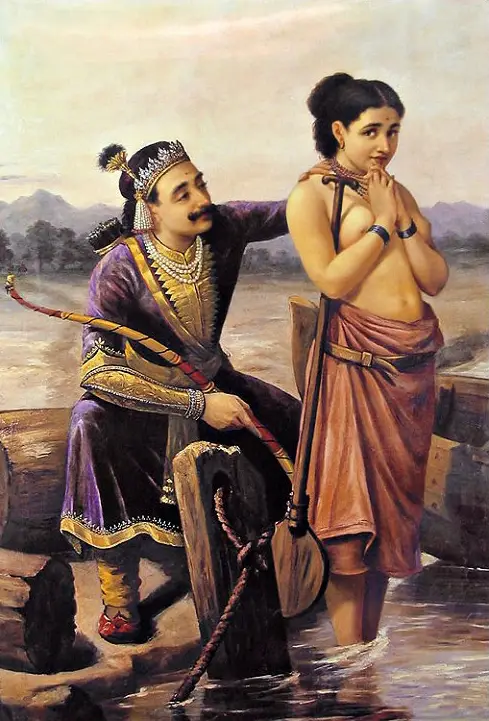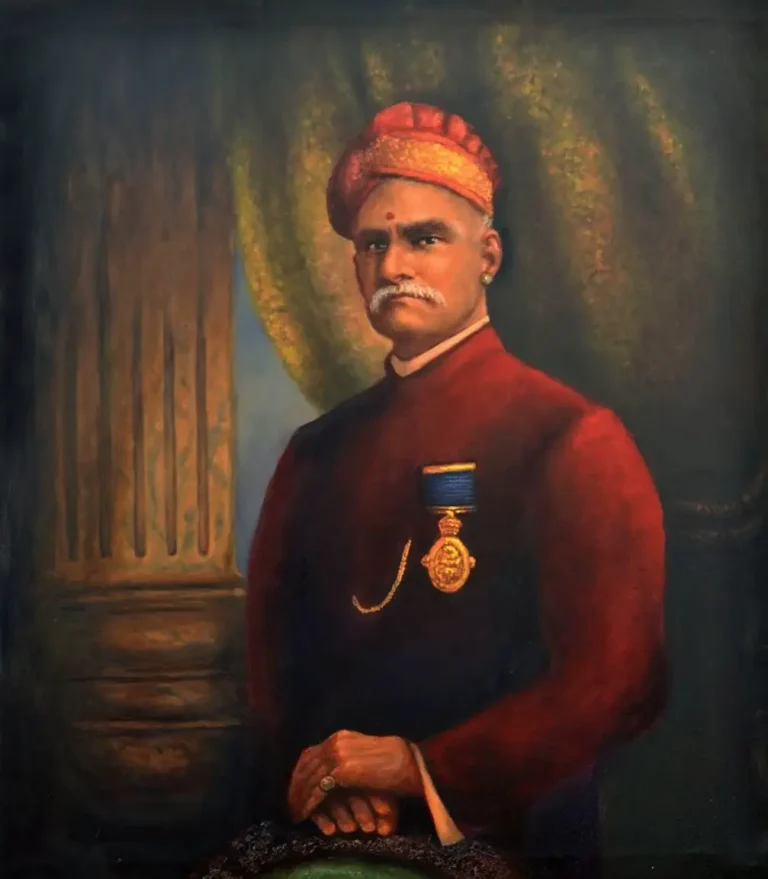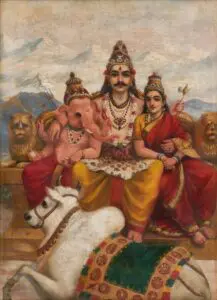Shantanu And Satyavathi
Shantanu And Satyavathi is a captivating oil painting on canvas by the illustrious artist Raja Ravi Varma, created in 1890. This artwork beautifully illustrates the moment when King Shantanu, enchanted by Satyavati, a fisherman's daughter, proposes a marriage that comes with a high-stakes condition. Satyavati demands that their children inherit the throne, which would displace Shantanu's son, Devavrata (later known as Bhishma). The grandeur of the characters and the intricate details in the painting reflect the cultural essence of the epic Mahabharata, making it a crucial part of Indian heritage.
Year 1890
About the Artwork
The tale captured in Shantanu And Satyavathi is steeped in rich mythology. Satyavati, who was known for her striking beauty and unique life circumstances, met King Shantanu while ferrying him across a river. As their bond grew, Satyavati made her marital acceptance conditional upon the throne's succession rights for her children. This moment prompted Devavrata, the dutiful son, to renounce his claim and vow celibacy, leading to his legendary status as Bhishma. The painting symbolizes selflessness, love, and the complexities of dharma (duty) within the Mahabharata narrative, illustrating how personal desires often clash with larger responsibilities.
Did You Know
Raja Ravi Varma was a celebrated Indian painter known for his ability to portray Indian mythology and historical figures with incredible realism and emotional depth, making him a pivotal figure in Indian art history.
Devavrata, who becomes Bhishma after his vow of celibacy, is one of the most revered characters in the Mahabharata, symbolizing sacrifice, loyalty, and unwavering commitment to dharma.
This painting not only reflects a story from the Mahabharata but also serves as an important cultural artifact that showcases the intricate blend of mythology and realism that characterizes Indian art in the late 19th century.









